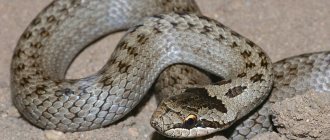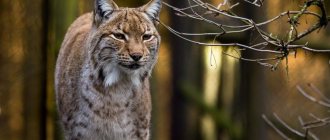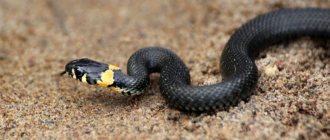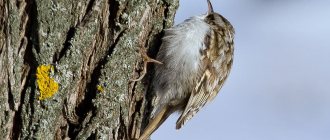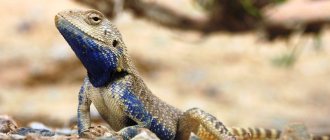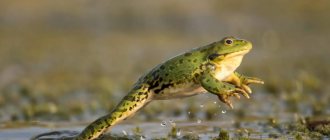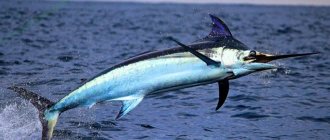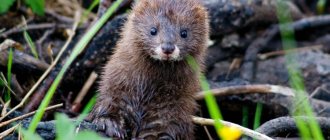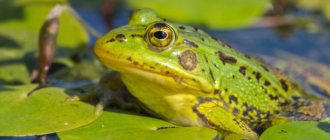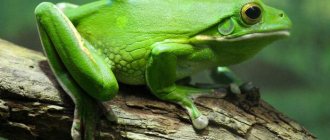Man has always been very wary of snakes. Any contact with them inevitably provokes fear, mystical associations and superstitious speculation. And if the snake also has red eyes, like a copperhead, then it was considered 100% the product of black power, witchcraft, designed to destroy the owner of the house, his household and cattle in addition. In general, everything is not easy with the copperhead. Despite the fairly wide distribution of this snake, people know little about it. And, either he takes her for the devil’s spawn, or for a legless lizard. The copperhead is neither one nor the other
Kingdom: Animalia. Phylum: Chordata. Class: Reptiles (Reptilia). Order: Scaly (Squamata). Family: Colubridae. Genus: Copperheads (Coronella). Species: Common copperhead (Coronella austriaca).
A snake surrounded by dozens of superstitions
There has long been one belief in Rus': if a person is bitten by a snake with a copper tint, then he will definitely die by sunset. The only way out was to cut off the bitten limb or cut out part of the flesh near the wound. And people really believed in it. Also in some regions it was believed that copperheads were messengers of evil sorcerers. Having entered the yard, they sent a curse on the owners of the house and their livestock. And if you try to drive them away, they will bite a person, after which he will get sick or die. It is not surprising that after this many are interested in truthful information about this snake. Especially about how dangerous the copperhead is for humans: is it poisonous or not? And if so, how to escape from its bite?
Treatment
There is a specific antidote for snake bites - a medicinal serum obtained by hyperimmunizing horses. Each type of snake has its own serum. In Russia you can buy a serum against the venom of the common viper, sand viper and viper. It should be noted that a doctor should use the serum, since, being a biological product, it can cause allergic reactions, including anaphylactic shock.
In addition to administering an antidote serum, treatment of a snake bite is carried out symptomatically. It is necessary to drink plenty of fluids to speed up the elimination of poison by the kidneys. To prevent allergic reactions, take the tablet “Suprastin”, “Diphenhydramine” or another antihistamine. If necessary, the doctor prescribes cardiac support and painkillers.
Common copperhead - poisonous or not?
But this question has a certain catch - it is a poisonous snake, but not for humans.
- The fact is that she has poisonous teeth. But they are located in the very depths of the mouth, especially since the size of the copperhead’s mouth is very small. Therefore, it will not harm a person. But, swallowing prey, it can easily kill it.
- It is also worth noting that it uses secretions near the cloacal glands to attack. They have an extremely unpleasant odor.
- To defend or attack, it often uses toxic saliva to paralyze. After all, its size is not so large as to strangle its victim. Therefore, before a meal, she paralyzes her. But we must not forget that she produces this toxin and the poison itself in small quantities. Therefore, the copperhead does not harm a large animal or, especially, a person.
- All rumors about its poisonousness are rooted in its resemblance to a viper.
- Also, people have long been frightened by her red eyes. There is even such a version: if bitten by a “copper snake,” the person will die before sunset.
- Many people attack the copperhead, mistaking it for a viper.
IMPORTANT: The copperhead is protected by law, since mass extermination has led to a decrease in the genus. This is a rare species! In some countries it is listed in the Red Book.
Is the bite dangerous for humans?
We can say that the copperhead, from the point of view of epidemiology and traumatology, is not much more dangerous than any other representative of the family of colubrids.
The main negative manifestation in a completely healthy person in response to receiving a bite will be:
- the appearance of minor edema, involving the soft tissue adjacent to the site of injury;
- discharge of a small amount of blood from two wounds located on the same line;
- subsequent formation of a crust over them and, possibly, the formation of a scar.
However, it is impossible to say for sure whether it is poisonous to domestic animals and children, since sometimes in response to their bites they develop massive hemocoagulation.
Did you know? Among copperheads, the phenomenon of melanism is widespread - color variability, characterized by a predominance of dark pigments. The entire body of such representatives of this species, including the eyes, is almost completely painted black.
However, there is a certain group of people for whom the bite of this reptile may pose some danger. These are those people who have increased sensitivity to various biologically active substances and enzymes that make up the copperhead saliva. These people may develop severe systemic angioedema, also known as angioedema.
The result can be death from asphyxia, which occurs as a result of swelling of the larynx and glottis of the victim. The first harbingers of this pathological condition are the appearance of pronounced swelling of the lips, nose, eyelids, and sometimes the entire face and neck as a whole.
Where does the common copperhead live?
The habitat of the common copperhead is very extensive, but the density of snakes in the territories they occupy is low. The snake is registered in the vastness of Europe, Asia, and the African continent. It has been noticed that the further north the habitat is, the less common reptiles are.
Interesting fact: The common copperhead is not so easy to meet; compared to the viper and grass snake, it is considered a rarity.
The permanent location of copperheads depends on the climate of a particular area. On European territory, this snake species lives in almost all areas except the Mediterranean islands, Ireland and the north of Scandinavia. On the African continent, the copperhead has chosen its northern and western parts. In the vastness of Asia, the snake lives in the southern part.
Regarding our country, the copperhead gives preference to the southern regions of Russia. On the eastern side, its range reaches southwestern Siberia, and from the northern side, to the Kursk, Tula, Ryazan and Samara regions. In the territories of the Vladimir and Moscow regions, the copperhead is extremely rare, literally in single copies.
The copperhead lives in both coniferous and deciduous forests; it loves pine thickets, but avoids the large open spaces of steppe zones. The snake feels safe among trees and bushes. It can settle in forest clearings, clearing areas, and dry meadows near the forest. The reptile is often found in mountain ranges, rising up to three kilometers, occupying bushy slopes there.
In areas where vineyards grow, it is quite possible to encounter copperhead. The snake loves rocky terrain, because boulders serve it not only as a reliable shelter, but also as a pedestal for warming up in the sun. The copperhead loves scree and rocky crevices. In our country, this reptile often inhabits railway embankments and forested areas. The copperhead is rare, but can be found right on the plot or in the garden. The snake loves soil with a lot of dry, rotting leaves. But he tries to avoid very damp places.
Now you know where the common copperhead lives, let's see what this non-venomous snake eats.
Preferred habitats
They are often found in vineyards and in areas where there is a lot of dry stones. Stones serve for them not only as a place of protection, but also as a cozy place for sunbathing. The copperhead's main habitats are on screes or in rocks. In Russia, she likes to settle on railway embankments and quarries, in swamps and river dunes.
They are also often found in small home plots or gardens.
Copperheads also love places with exposed rocks and damp soils. Heaps of dry leaves and humus are also preferable for them. But they avoid dry wood.
Appearance and features
The small copperhead snake has its own characteristic features and distinctive features.
The color of a reptile's spine can be:
- gray;
- yellowish-brown;
- reddish brown;
- dark gray (almost black).
As already noted, the snake’s belly is often copper-colored, and its back has a certain reddish tint. It was noticed that the gray tone predominates among copperheads living in the southern territories. When molting occurs, the reptile's color darkens and can become brown or almost black. The shades of males and females are also different. Males have more red tones, while females have more brownish tones.
One of the distinctive features of the copperhead is a black stripe, which starts at the end of the muzzle and passes through the eye at the level of the pupil. The eyes and pupils of the copperhead are round. The iris of the eyes is colored reddish. On the ridge and sides of the copperhead you can see vertically elongated spots located in several rows. They can clearly contrast with the main background color, or they can be barely distinguishable. In the back of the head there are a pair of spots or stripes of dark color connecting to each other.
Interesting fact: Among common copperheads there are melanistic snakes (colored almost black), but they are not common.
It has been noticed that young copperheads always look richer, have brighter color tones, and a contrasting pattern. It is worth noting that the ornament on the body of the copperhead is not a characteristic feature; some individuals do not have it at all or it is too blurred.
So, the copperhead is often mistaken for a poisonous viper; let us characterize their main differences:
- the copperhead does not have a clearly visible head that stands out from the rest of the body; it is flat and merges with the body; there is a clear cervical transition between the body and the head of the viper;
- the scutes covering the head of the copperhead are large; in the viper they are much smaller;
- the round pupil of the copperhead differs from the vertical pupil of the viper;
- the scales of the copperhead are shiny and smooth to the touch, the body of the viper is ribbed and rough;
- Unlike the dangerous viper, the common copperhead is not endowed with poisonous teeth.
The teeth located on the upper jaw of the copperhead increase relative to the direction deep into the mouth. The scales located on the back are shaped like diamonds or hexagons. The carinae are visible on the belly scutes, which form ribs along its edges. There are 19 scales around the middle part of the body. On the abdomen, males have from 150 to 182 scutes, while females have from 170 to 200.
What is their difference
The copperhead, which is safe for humans, has several characteristics that significantly distinguish it from the poisonous viper.
- The copperhead has a slightly ovoid oval head. The viper's head is triangular in shape. It is clearly demarcated from the neck. The superciliary ridges are visible above the eyes of the viper.
- On the head of the copperhead there are symmetrical shields that have the correct shape. On the head of vipers there are three triangular shields, the shape of which is irregular.
- The copperhead's pupil is only round. The vertical pupil of the viper is similar to that of a cat.
- The copperhead has a thin and long tail. The viper has a thicker and shorter body with a blunt and short tail.
- Copperheads have rows of small spots and dots running along their back that stand out against the background color. Almost all vipers have a dark zigzag stripe on their backs, with the exception of black vipers, which have no pattern.
- The abdomen of copperheads changes color from light to variegated, turning into
- Umedyanka does not have a narrow elevation in the middle of each scale. Vipers have it.
- Copperheads do not have poisonous teeth. Vipers have poisonous teeth in front of their mouths that rotate 90 degrees.
- The shield covering the copperhead's anus consists of two scales. Vipers have one, and do not separate.
- The copperhead is more thermophilic than the viper.
Lifestyle and diet
The common copperhead is perfectly camouflaged due to its pattern. Its color allows it to hide from many predators and people. If it is noticed, then in 99% of cases it is confused with the poisonous common viper, which is one of the most common snakes in Russia.
Since mice are one of the copperhead's favorite foods, the reptile very often spends the night in mouse norms.
Their activity, like that of almost all reptile species, is closely related to local weather and climatic conditions. As cold-blooded animals, they need to warm up first to reach the required "operating temperature". Therefore, they most often begin to be active in April, when the sun is already warm enough.
At the end of spring they enter the mating phase. In winter they go into hibernation very late. Sometimes, the copperhead can be found even in November, when it goes hunting.
In winter they hibernate. For this state, they choose burrows of small mammals, rock cracks or accumulations of stones. If the copperhead does not find proper shelter, it may well overwinter, hiding under a moss cushion.
Reptiles often gather in one hole and spend the night in a group. Moreover, the same reptiles can visit this sleeping place again, but in the second or third winter.
The copperhead's diet includes not only mice. She doesn't mind eating other mammals and reptiles. In particular, the main diet of this snake includes:
- lizards;
- young snakes;
- shrews, mice, rats, etc.;
- frogs and toads;
- small birds and chicks;
- insects;
- earthworms;
- eggs of birds and lizards.
Depending on the region where it lives, the diet of this species differs significantly. For example, in the southwestern regions of the country, snakes feed mainly on lizards; in swamps and forest areas they prefer small mammals.
In addition to the habitat, the age of the snake also influences preferences. Juveniles prefer lizards and slow-moving slugs, while adults mainly feed on small mammals, especially young mice.
In search of food, the snake slowly and carefully envelops the surrounding area and explores it for potential prey. The excellent sense of smell of her tongue helps her hunt. She sticks out her tongue and catches odor molecules from the environment. Then, she transfers them to the so-called Jacobson's organ, which deciphers the meaning of the “smell”. Thus, the copperhead can easily find lizards or frogs in cracks in rocks, houses or burrows in the dark.
When it slowly and carefully creeps up to the victim, the snake quickly grabs it with its sharp teeth and immediately clasps it. The victim cannot breathe due to the intense pressure and dies from lack of oxygen.
Even young individuals adhere to this tactic. They do not need to learn hunting tactics, since it is embedded in their DNA at the genetic level.
Very small prey such as young mice, small lizards and insects are caught in the mouth and consumed directly because there is no need to suffocate them.
The copperhead obtains water from dew on plants, from puddles or from other sources.
In suitable habitats, which are characterized by sunny areas, good wintering areas and an abundance of food, the copperhead shows its high "local connections". That is, it moves through this zone throughout the year, covering several hundred square meters. Therefore, you should not be surprised if you meet the same copperhead several times during the season in different parts of the city or even the country.
Who attacks them
Evolutionarily, copperheads choose places for their future residence where the likelihood of meeting a potential enemy is minimized. It is for this purpose that some individuals climb, in search of a quiet place, into meadows and wooded areas of mountains up to a height of about three thousand meters.
The main natural enemies of these reptiles are martens, badgers, raccoons, rats, wild boars, hedgehogs and large representatives of birds of prey (golden eagles, eagles, falcons, eagles and owls). Young individuals can also sometimes be eaten by large representatives of amphibian frogs.
At the sight of any potential danger, this snake curls up into a ball in order to hide its head and disorient the enemy, and then makes sharp lunges towards the attacking enemy, simultaneously making bites. During moments of struggle, copperheads actively use elements of external intimidation - they inflate their ribs in order to appear larger, hiss and tremble with their whole body.
You will be interested to know where the noisy viper is found and why it is dangerous.
In addition, they are capable of secreting from the pericloacal glands located not far from the anal shield a liquid with a rather unpleasant odor that repels enemies.
Reproduction
As mentioned above, sexual maturity usually occurs between the ages of three and four years. Mating usually occurs in April or May.
The male first crawls around the female until both bodies are parallel to each other. The male then places his head on the female's neck. If she tries to escape or resists, he may bite her on the neck to restrain her. During mating, the male’s sexual organ penetrates the female and “bonds” the reptiles. Typically, the mating procedure takes from 20 to 45 minutes. Moreover, all this time the snakes have no contact with each other.
The copperhead is a viviparous snake. All embryonic development occurs in the mother's womb, but in "self-sufficient" eggshells that do not require nutrition from the mother's body.
The gestation period is at least four to five months. Therefore, cubs are usually born in late August or early September. Immediately at birth or a little later, the young can break out of their thin eggshells to become completely independent reptiles.
On average, one female brings from six to eight snakes. Their weight is around three grams, and their length does not exceed 20 centimeters. Larger females are more fertile and can give birth to up to 20 young at a time.
How the respiratory system of the copperhead works: description
Despite this peculiar shape, the copperhead and other snakes have internal organs. But there is a certain feature that is common to the entire class.
- In the copperhead and other species, the left lung is reduced. This is due to the fact that the shape of the snake is narrow and oblong, and it has to crawl on the ground. To be able to wriggle without squeezing the organs, nature reduced one lung by almost 85%. It practically does not play any important role.
- But the right lung stretched to about a third of the length of the entire body. All responsibility for breathing rests with him.
- They also have a tracheal lung. It has a bag-like shape and is a continuation of the trachea. Its location is on the upper side of the posterior trachea. The tissue composition is reminiscent of a sponge, since it has many small cells in which gas exchange occurs.
IMPORTANT: The tracheal lung of snakes is used in situations, for example, when the right lung is compressed by a swallowed large animal. That is, its use is compensatory.
- Copperheads and other snakes have another unique feature - they can breathe while eating. They swallow their prey. Therefore, in order not to block the access of oxygen, this trachea is moved slightly to the side. And it allows you to breathe while eating.
- Just like other serpentine species, copperheads have an organ of charm that is their tongue. It is with its help that they catch odors.
Population and species status
Although the habitat of the common copperhead is quite extensive, the population of this reptile is small. Copperheads are rare because their distribution density is low. Herpetological scientists explain this by her food preferences. The copperhead's diet is based on lizards, and this type of food supply is not considered reliable compared to a variety of rodents and frogs. In those areas where the number of lizards is declining, the number of copperheads is also sharply decreasing.
People also influence the size of the copperhead population. They try to kill her when they meet, mistaking her for a dangerous viper. In addition, rapid human activity is leading to a reduction in the permanent habitat of this small reptile. Humans are gradually displacing the copperhead from its permanent place of residence, and this has an extremely negative impact on the copperhead population, because snakes lead a sedentary lifestyle and always try to remain in their territory, which they zealously defend.
As a result of this situation, the common copperhead is under protection in some states, where its destruction and illegal catching are strictly prohibited. In our country, it is listed in the regional Red Books of some regions and a number of republics.
STEPPE VIPER: LIFESTYLE, POISON, PHOTO, REPRODUCTION, NUTRITION
ORDINARY SNORK: DESCRIPTION, PHOTO, FOOD, LIFESTYLE, CARE IN THE TERRARIUM
VIPER: DESCRIPTION, PHOTO, HABITAT, BITE, POISON, APPEARANCE
ROYAL SNAKE: DESCRIPTION, REPRODUCTION, PHOTO, POISON, BEHAVIOR
Symptoms
Is a copperhead bite dangerous for humans? A snake almost never attacks people first; if it bites a person, it is solely to protect its own life or the peace of its offspring. The reptile often attacks small children, as they like to stir up various holes with sticks. Photo and description of a bite from a copperhead snake:
Attention! If the victim is susceptible to allergic reactions, a copperhead bite is considered dangerous for him and can cause negative health consequences. If any severe symptoms occur, you should immediately seek medical help.
